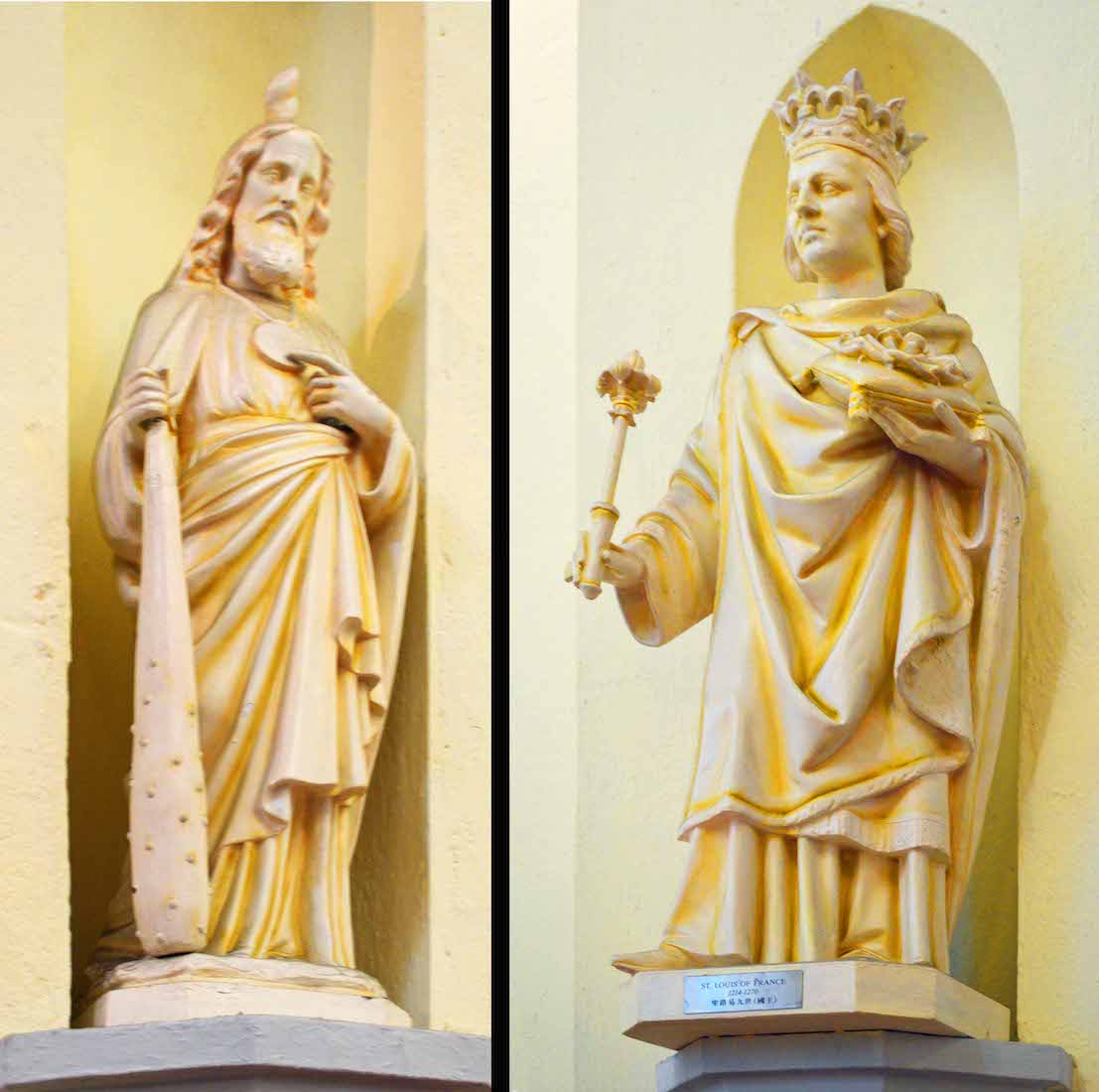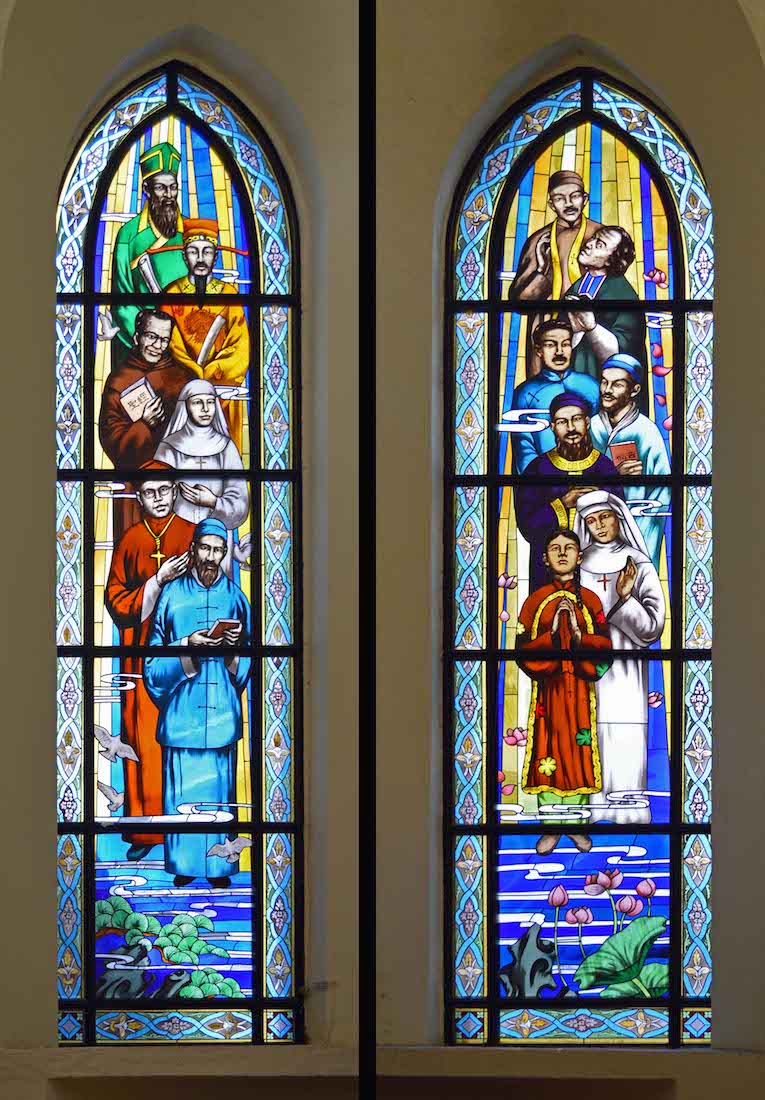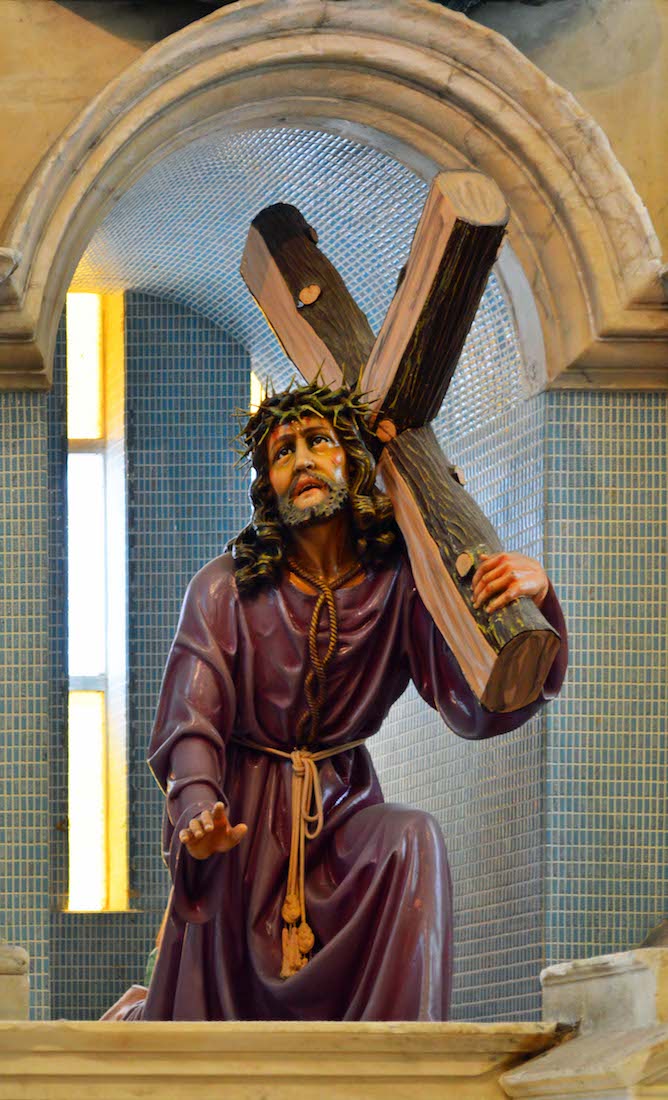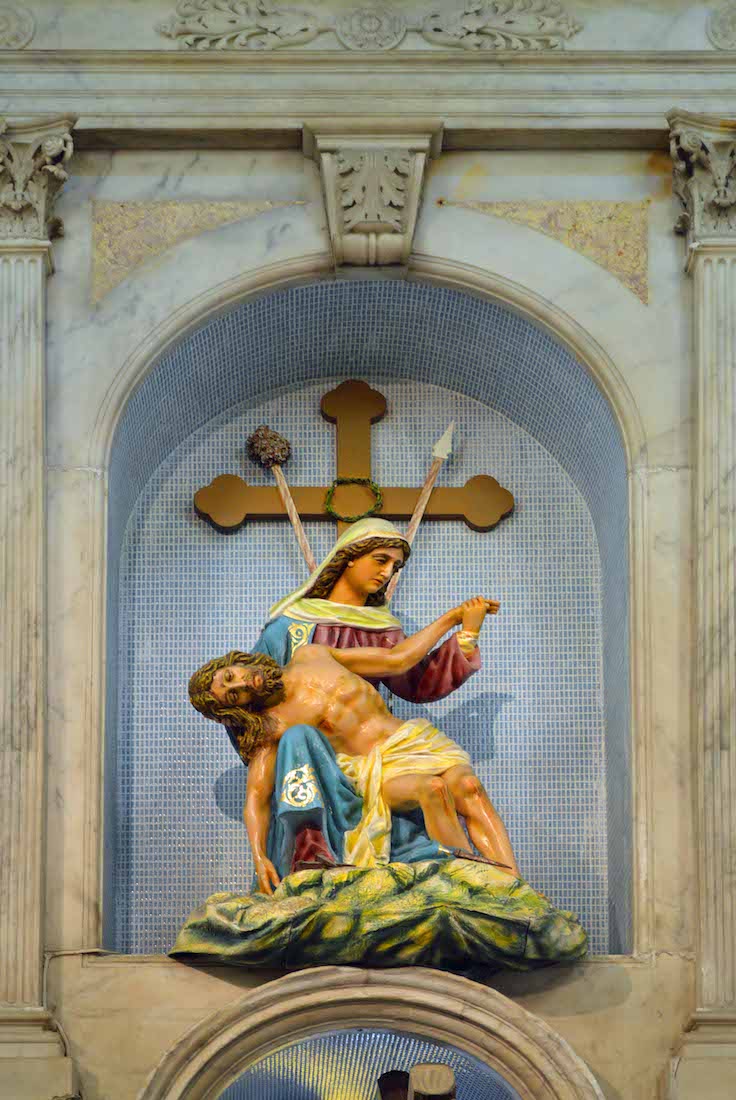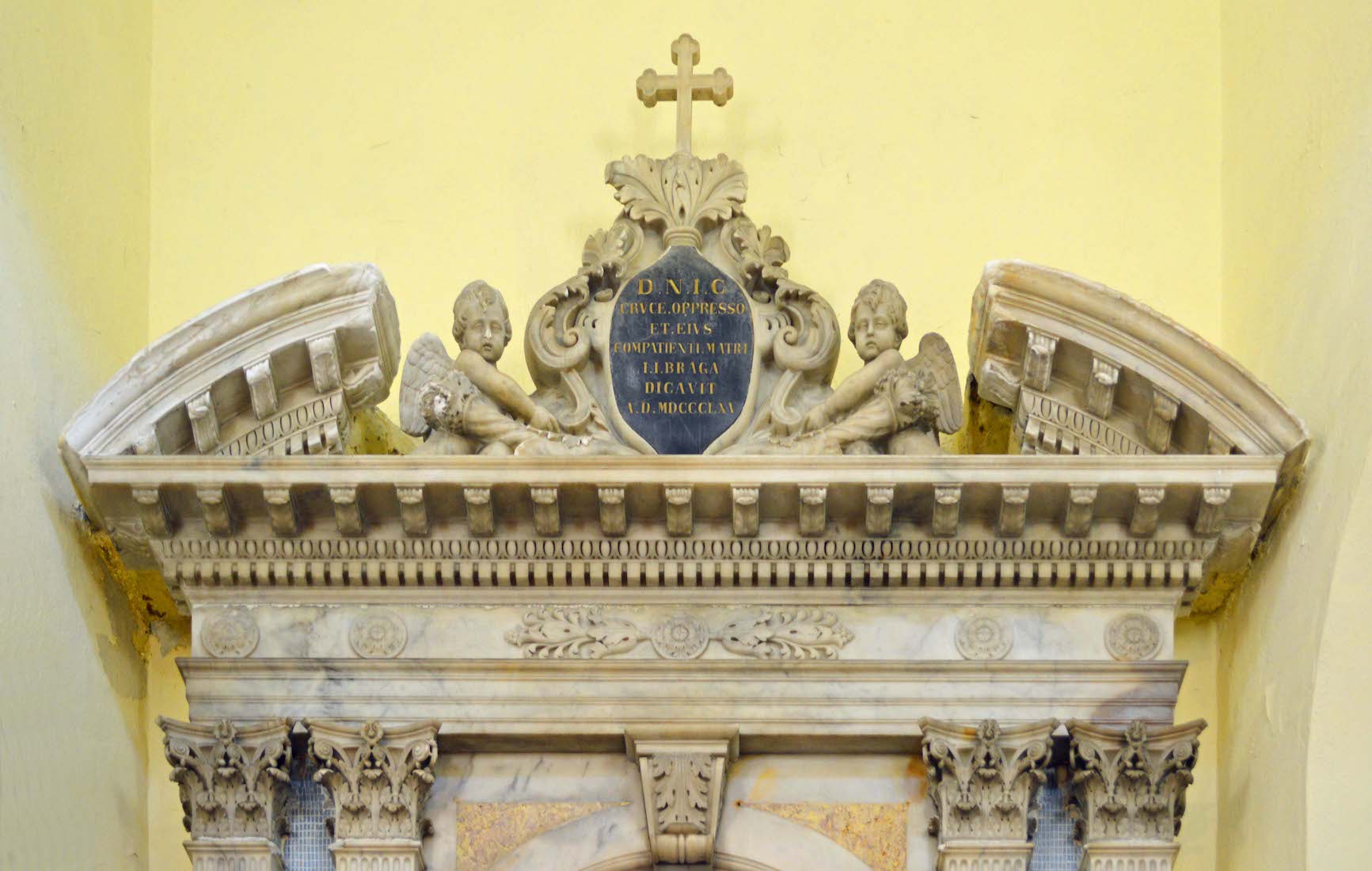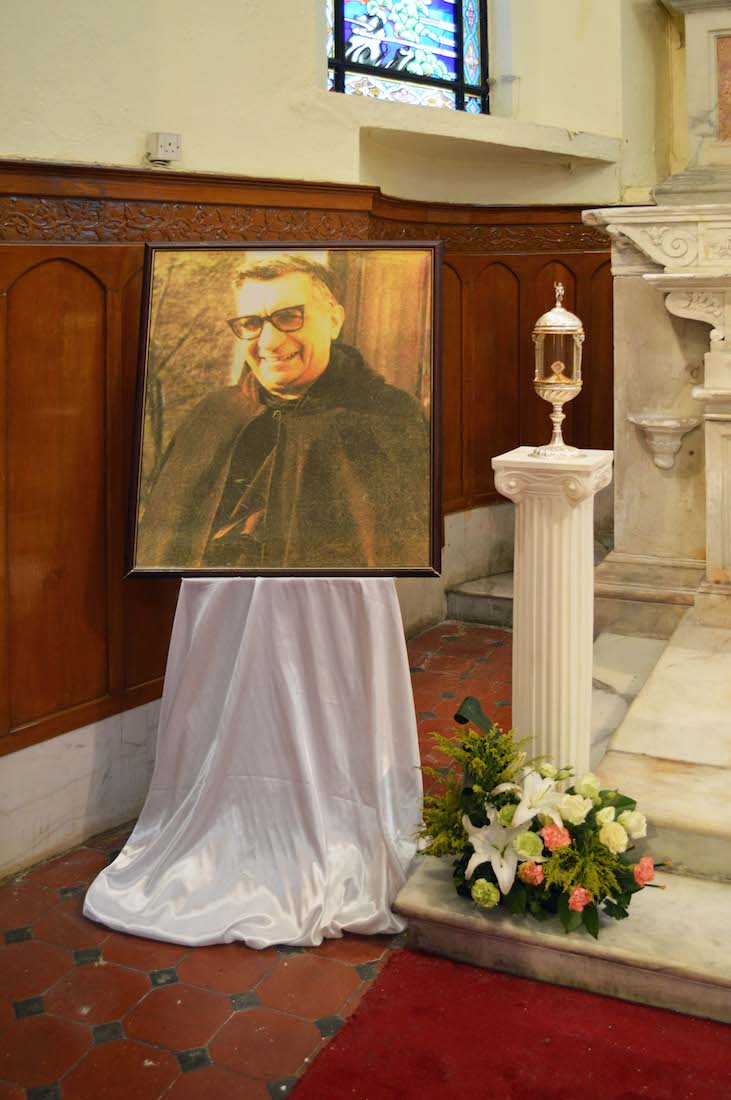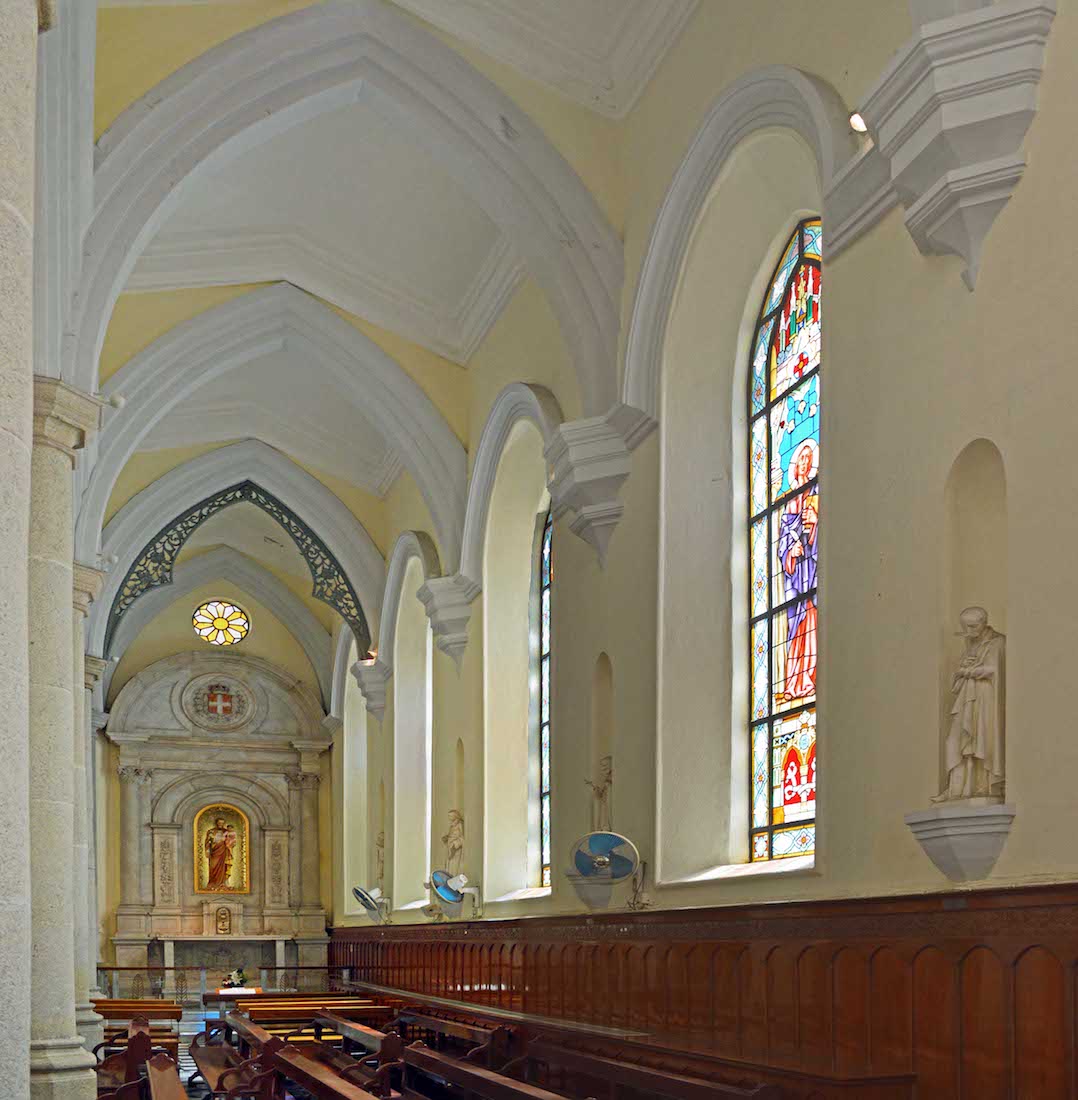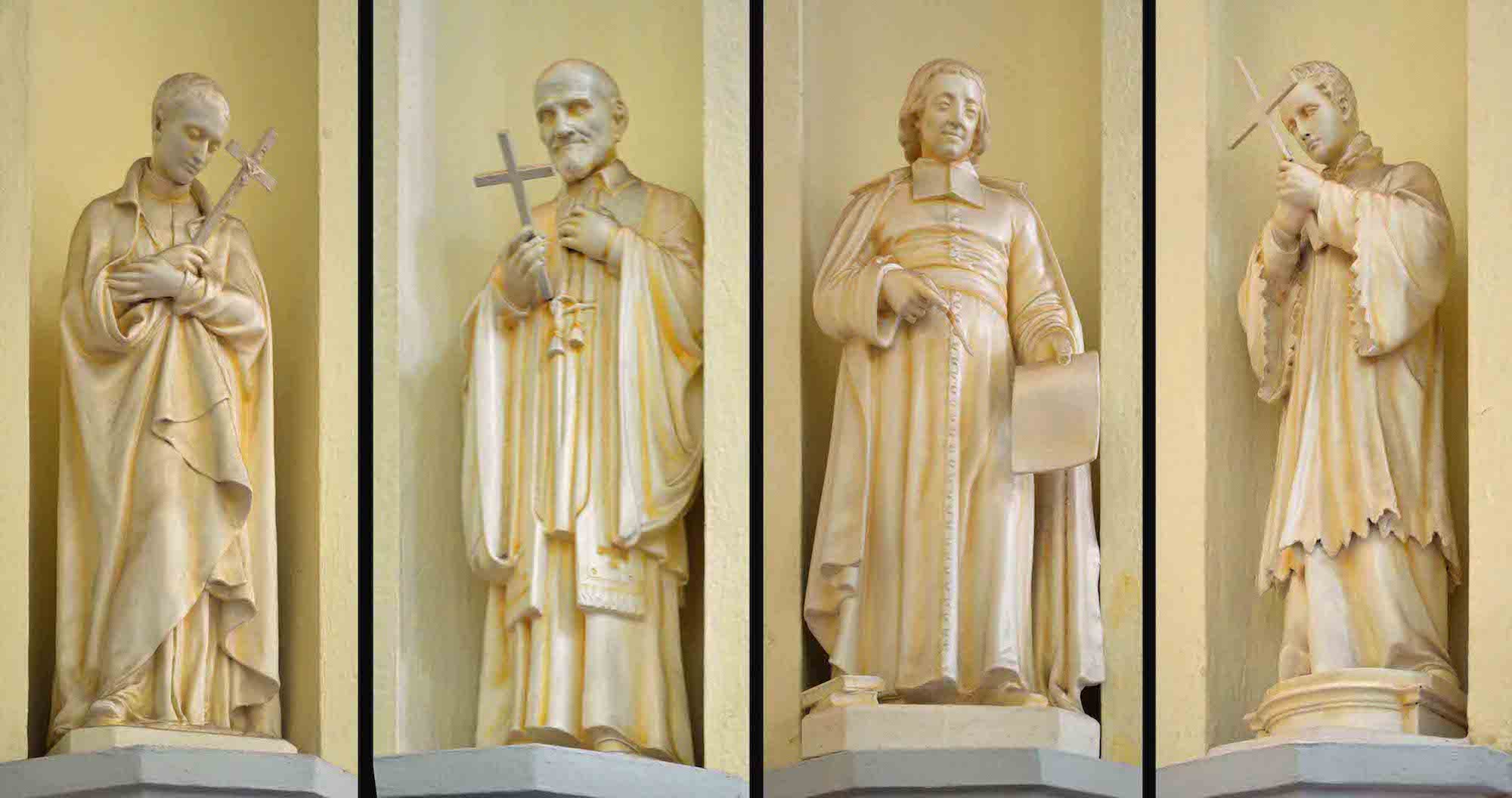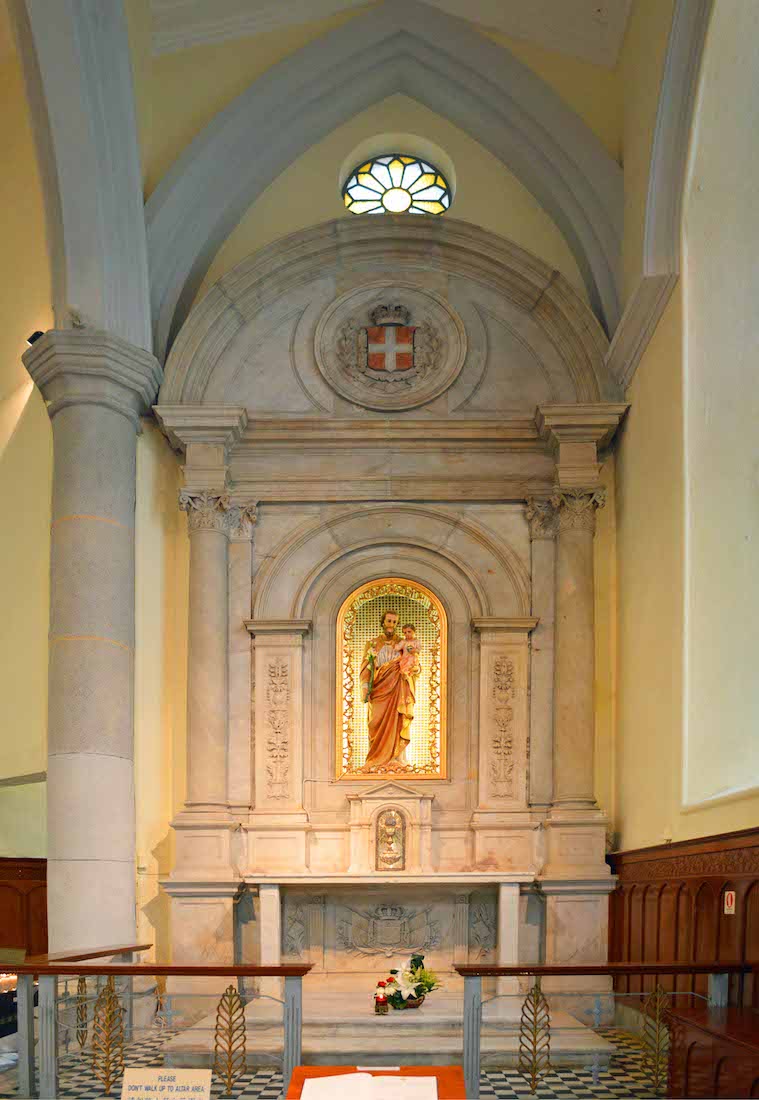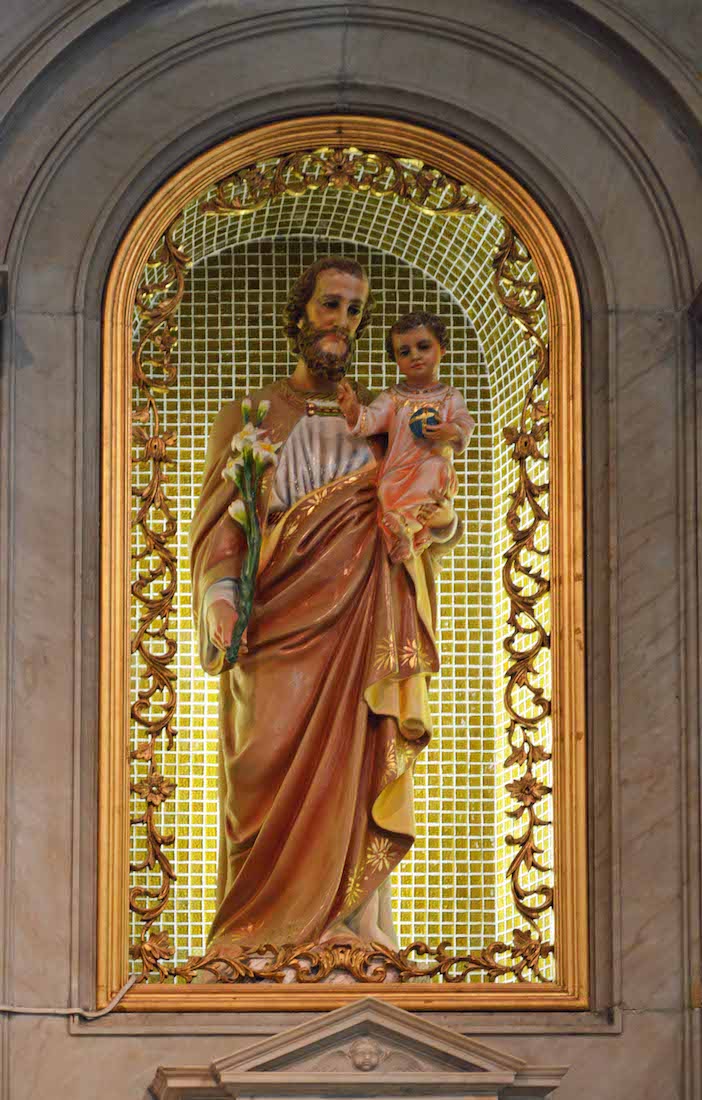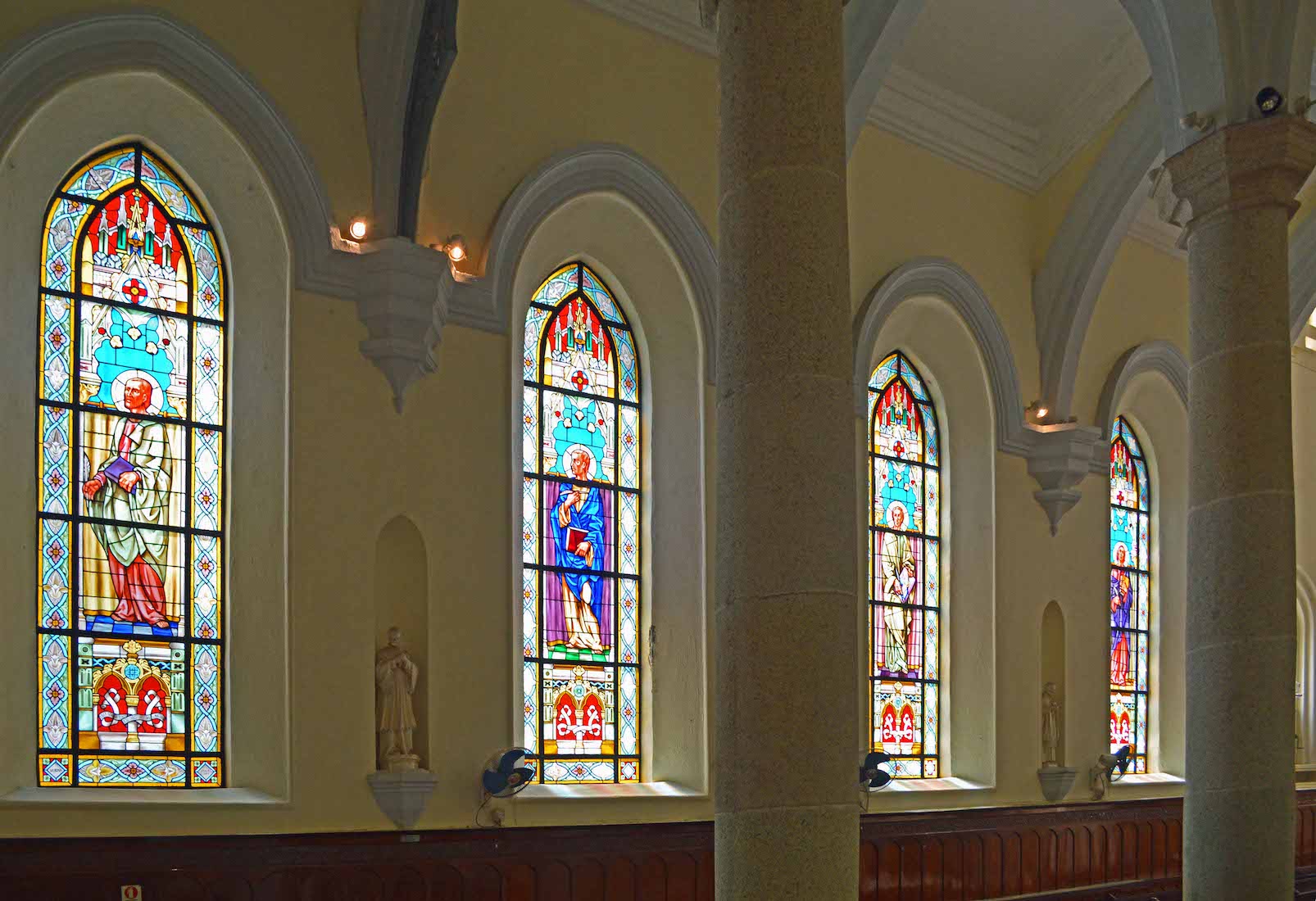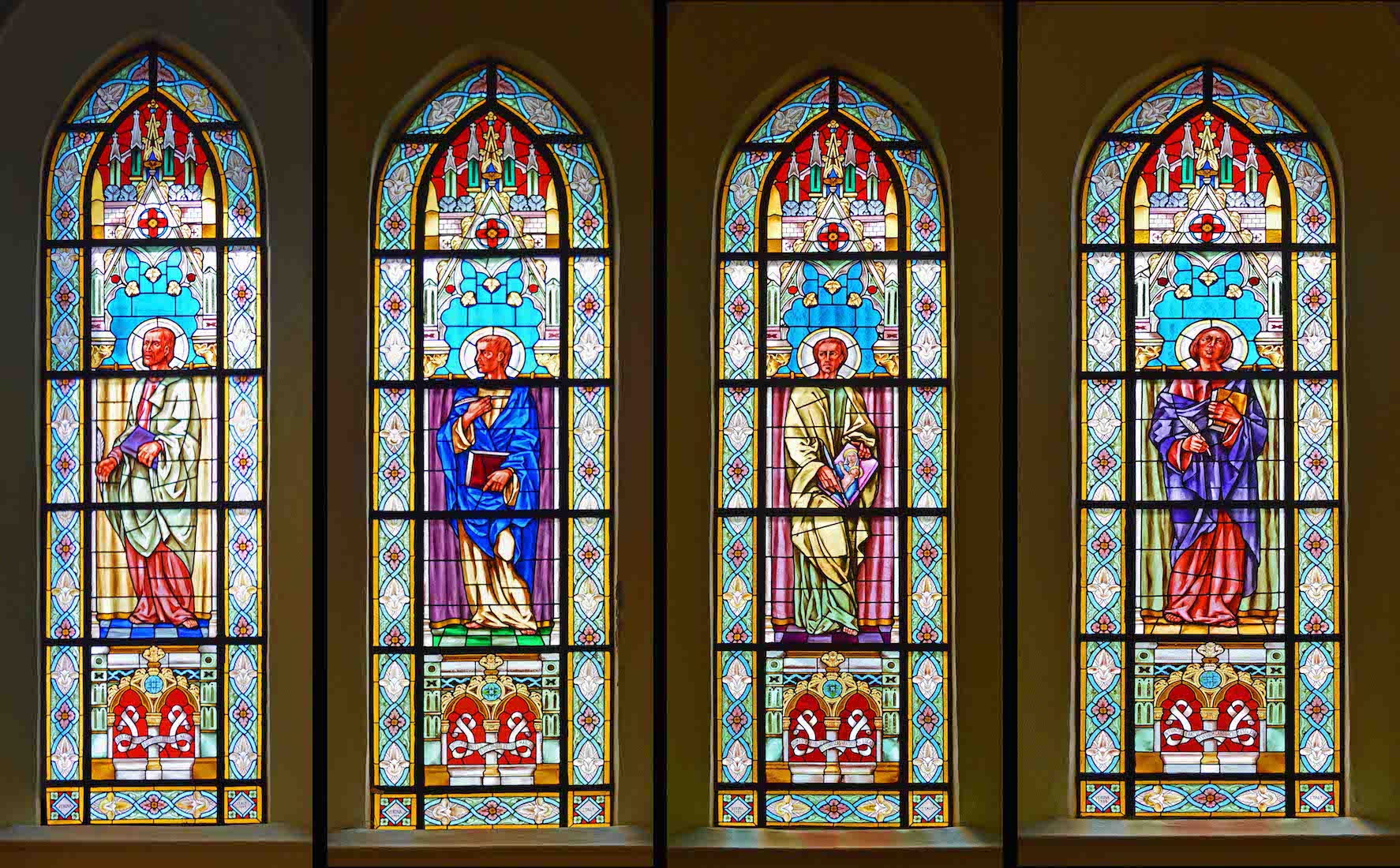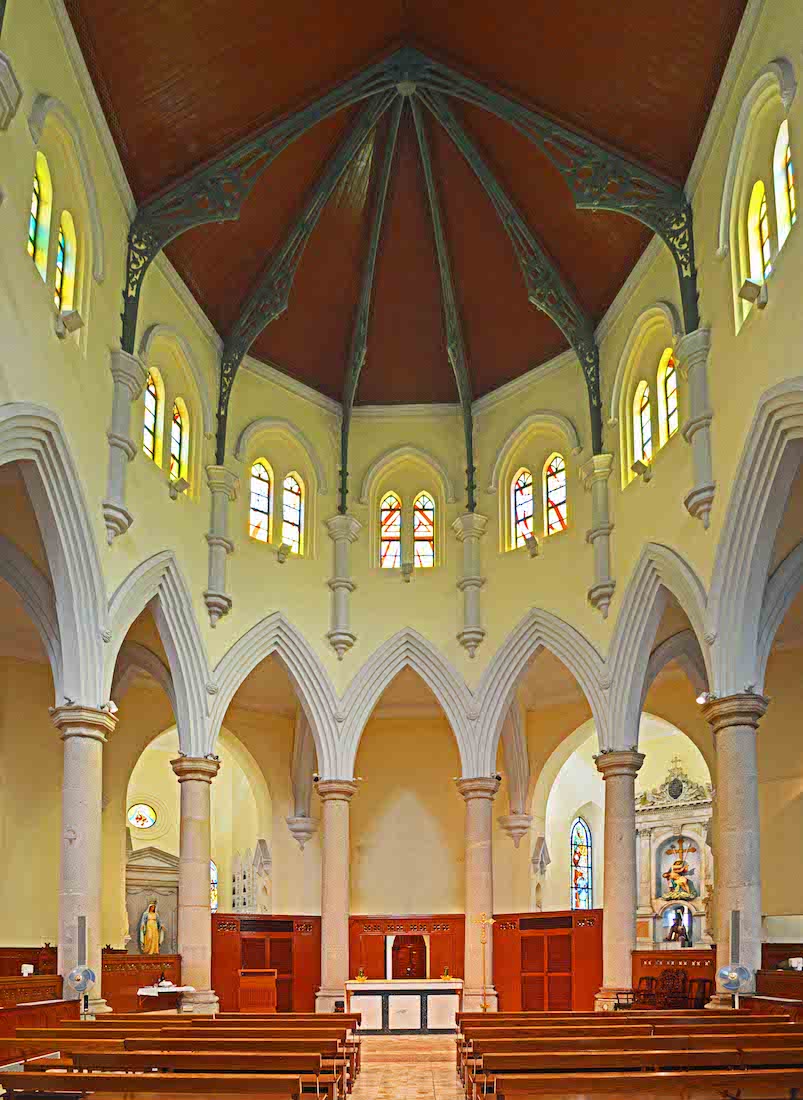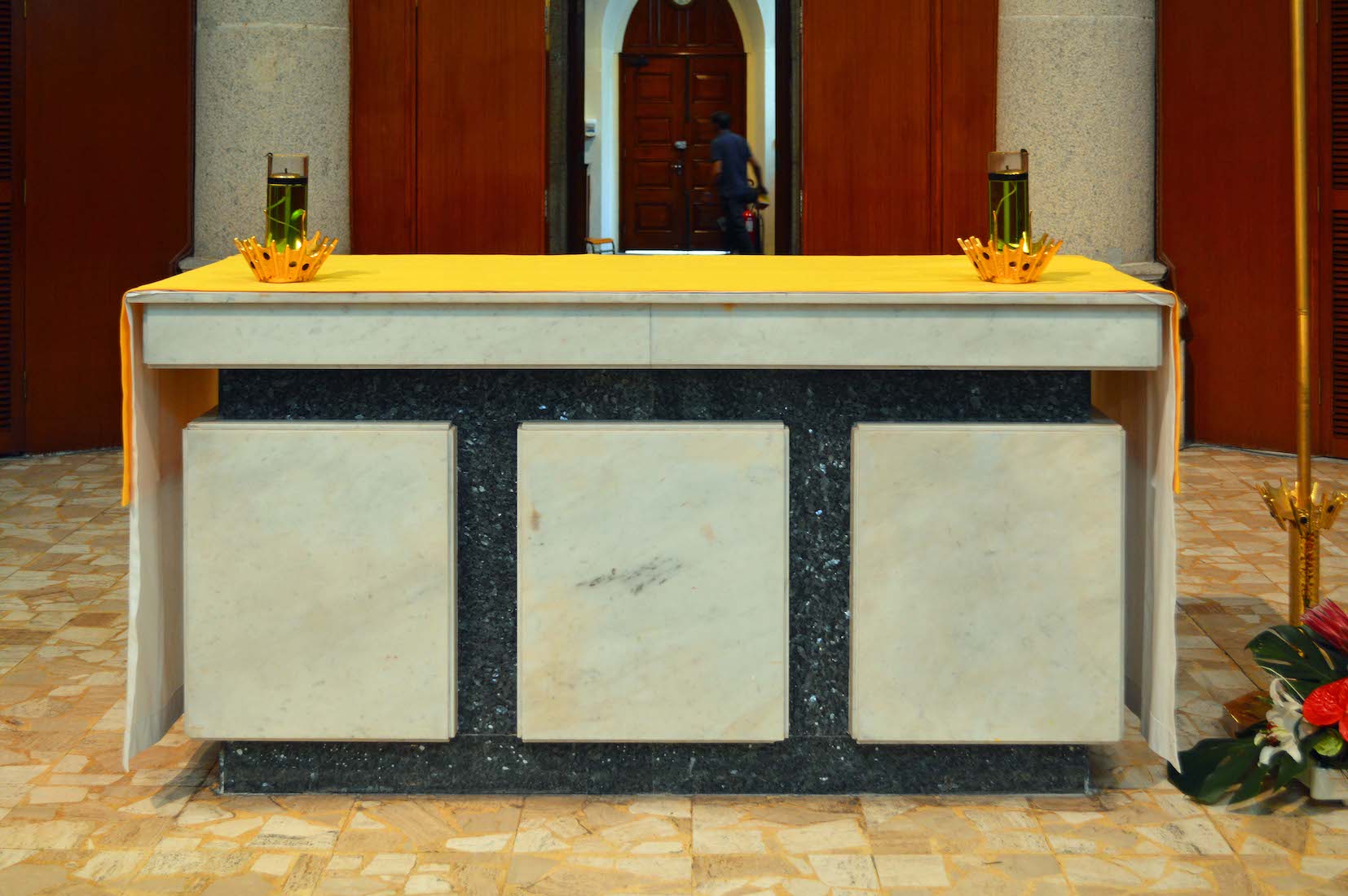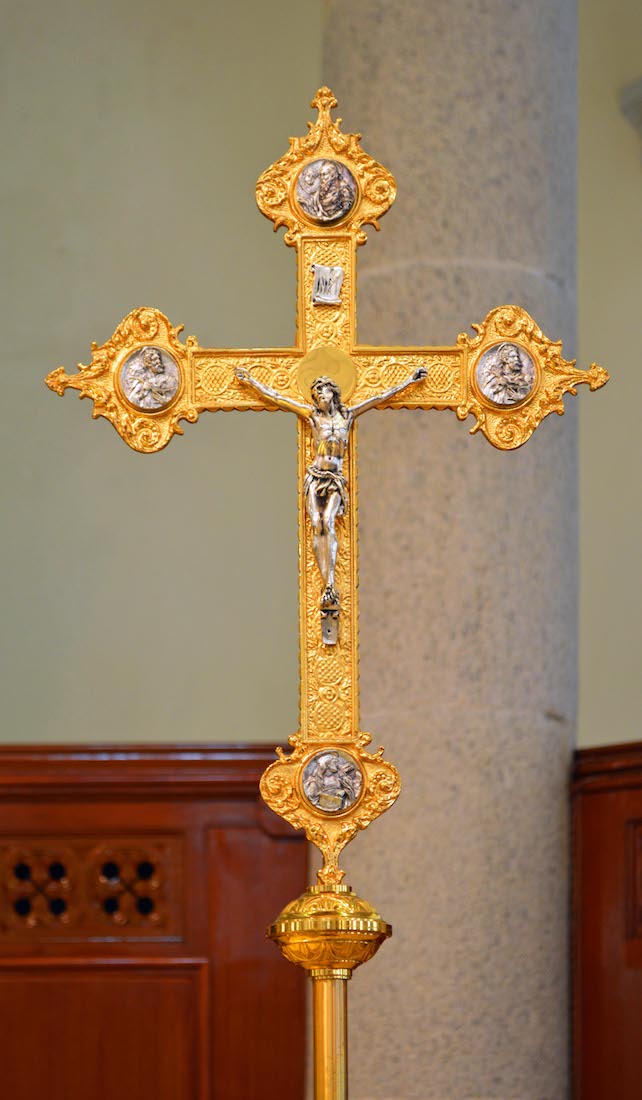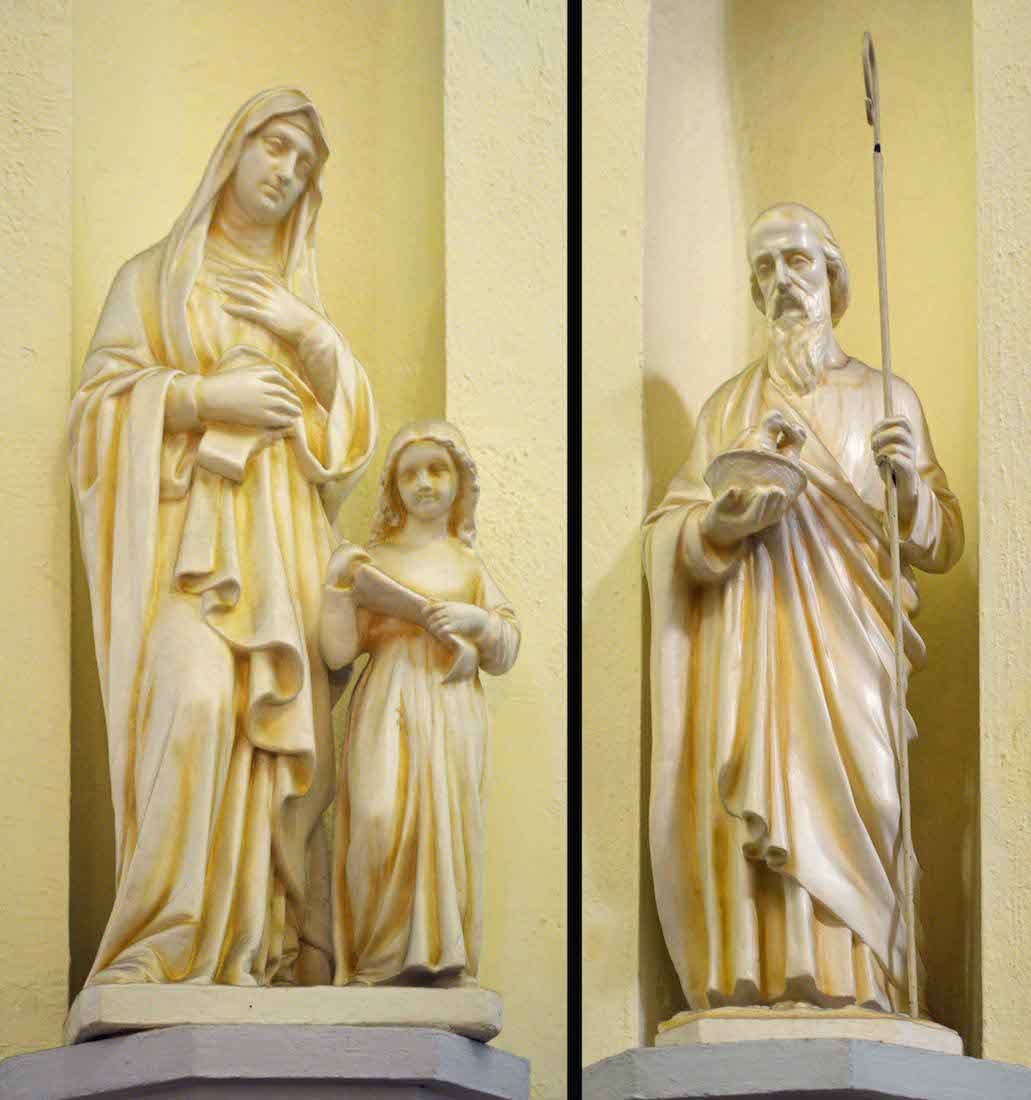
Traditionally St Anna (Anne) is the mother of Mary, and St Joachim is her husband. They are shown here in the Mission Chapel. PLAN
42. BELL
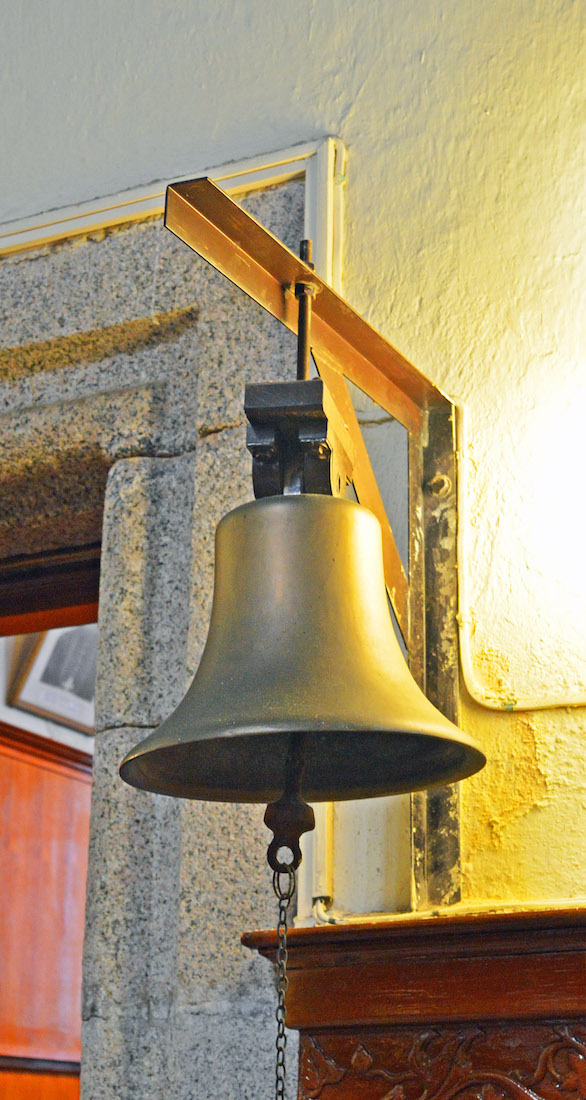
Most cathedrals have a bell which is used to announce the beginning of a worship service. This bell looks as though it might have a history, but I don’t know what it is!
43. CHAPEL OF THE CHINESE MARTYRS
We bypass the (private) sacristy and come to this chapel. The altar has two interesting sculptures above, there are two stained glass windows, two saints, and a portrait in the foreground. The altar came from the old Church of Immaculate Conception, and was moved to the Cathedral in 1888. The top sculpture is ‘The Pietà’, and the lower statue is known as the ‘Merciful Jesus’ statue. The altar is ‘Our Lord’s Passion Altar’. The altar itself is shaped like a coffin. On its side is a carving of a lamb crouching on a book. The meaning of the carving is that only the self-sacrifice of the Son of God can help us understand the mystery of God’s amazing love.
44. CHAPEL SAINTS
These saints are St Jude at left, and St Louis of France (1214-1270). At his coronation as king of France, Louis IX bound himself by oath to behave as God’s anointed, as the father of his people and feudal lord of the King of Peace.
45. CHAPEL WINDOWS
The window on the left shows six early Chinese evangelists. These stand for tens of thousands of witnesses of God in China. The window on the right shows seven martyrs of China, representing 120 martyrs who gave their lives for Christ.
46. CHRIST BEARS HIS CROSS
This sculpture of Christ bearing his Cross is a graphic focal point for this chapel.
47. PIETÀ
Also above the altar is this depiction of Mary cradling the body of the crucified Jesus. The spear and the sponge lean against the cross behind.
48. CHAPEL ALTAR DETAIL
The Latin translates to: Of our Lord Jesus Christ oppressed by the Cross, and his suffering Mother. Dedicated to J. J. Braga AD 1865. This chapel was originally ‘the Chapel of our Lord’s Passion’.
49. PORTRAIT
The identity of the man in the portrait is unknown to me. Relics of 16 Chinese martyrs are stored in the Cathedral in a specially designed relic box.
51. FOUR SAINTS
The four saints depicted here are (from the left): St Bruno (1030-1101), St Vincent de Paul (1581-1660), St J B de la Salle (1651-1719), and St Aloysius Gonzaga (1568-1591).
52. CHAPEL ALTAR
Some of these chapels have been renamed over the years. This chapel was once the Memorial Chapel. Notice the Coat of Arms at the top.
53. ST JOSEPH ALTAR
The altar figure is St Joseph and the child Jesus. This altar is decorated with the Coat of Arms of the House of Savoy, and was a gift from the then future King of Italy. This connection helped save the Cathedral in WWII.
54. FOUR EVANGELIST CHAPEL WINDOWS
The windows of the Four Evangelists Chapel make a bright display.
55. CHAPEL WINDOWS DETAIL
These windows show the Four Evangelists: Matthew, Mark, Luke and John. The names are included in the scrolls inside the crowns. The windows were made in Verona in 1984.
56. EAST OF THE ALTAR
There is one remaining area of this Cathedral to investigate – a smaller gathering area East of the sanctuary. This area is lit by high clerestory windows.
57. REAR ALTAR
Every cathedral needs a smaller area for small congregations. We find here a small altar, and another processional cross.
58. PROCESSIONAL CROSS
This cross too has the crucified Christ in central position, and what appears to be the Four Evangelists at the ends. The INRI sign hangs above Christ’s head, standing for ‘Jesus of Nazareth, King of the Jews’.
59. THE TRUE VINE
We turn our attention to the back of the large central icon cross. The true vine (Jn 15) has Christ at the centre surrounded by his twelve disciples. Near the base of the vine are two Chinese rmartyrs: Father Zhao Rong and Father Yuan Zai-de. .
60. CROSS ICON
The focal point of the nave is this crucifix constructed in the form of a traditional icon. The cross has INRI (INBI) across the top, and pictures of St Mary and presumably St John at the ends of the cross bar. This completes our tour of the Cathedral.

CONCLUSION
hope you have enjoyed visiting the Cathedral of the Immaculate Conception, Hong Kong with me. Cathedrals have their similarities but also their own distinctive characteristics, and this Cathedral is no exception. I am happy to receive constructive comments or corrections concerning this website. The best websites are the ones which have no errors! I am grateful to my wife Margie who came to Hong Kong with me, and who has proof-read these pages.
Much of the textual information about the Cathedral has come from Wikipedia and from the Cathedral pamphlets. I am happy to acknowledge these sources.
The link for the Cathedral website is:
http://cathedral.catholic.org.hk/index.php?id=4
The photographs which appear on this site can also be found in higher resolution at:
https://www.flickr.com/photos/paulscottinfo/sets/
Paul Scott Site created 06 / 2015 ; reformatted 06 / 2020 .


